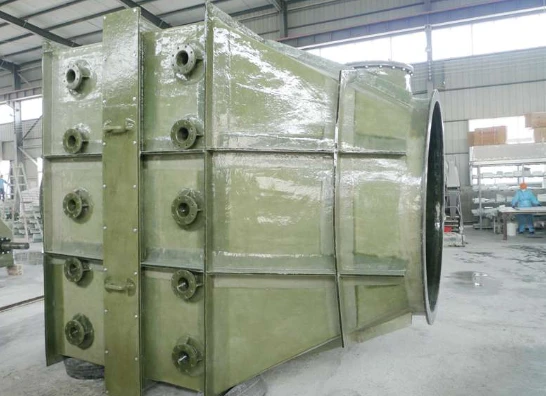
-
 Afrikaans
Afrikaans -
 Albanian
Albanian -
 Amharic
Amharic -
 Arabic
Arabic -
 Armenian
Armenian -
 Azerbaijani
Azerbaijani -
 Basque
Basque -
 Belarusian
Belarusian -
 Bengali
Bengali -
 Bosnian
Bosnian -
 Bulgarian
Bulgarian -
 Catalan
Catalan -
 Cebuano
Cebuano -
 China
China -
 China (Taiwan)
China (Taiwan) -
 Corsican
Corsican -
 Croatian
Croatian -
 Czech
Czech -
 Danish
Danish -
 Dutch
Dutch -
 English
English -
 Esperanto
Esperanto -
 Estonian
Estonian -
 Finnish
Finnish -
 French
French -
 Frisian
Frisian -
 Galician
Galician -
 Georgian
Georgian -
 German
German -
 Greek
Greek -
 Gujarati
Gujarati -
 Haitian Creole
Haitian Creole -
 hausa
hausa -
 hawaiian
hawaiian -
 Hebrew
Hebrew -
 Hindi
Hindi -
 Miao
Miao -
 Hungarian
Hungarian -
 Icelandic
Icelandic -
 igbo
igbo -
 Indonesian
Indonesian -
 irish
irish -
 Italian
Italian -
 Japanese
Japanese -
 Javanese
Javanese -
 Kannada
Kannada -
 kazakh
kazakh -
 Khmer
Khmer -
 Rwandese
Rwandese -
 Korean
Korean -
 Kurdish
Kurdish -
 Kyrgyz
Kyrgyz -
 Lao
Lao -
 Latin
Latin -
 Latvian
Latvian -
 Lithuanian
Lithuanian -
 Luxembourgish
Luxembourgish -
 Macedonian
Macedonian -
 Malgashi
Malgashi -
 Malay
Malay -
 Malayalam
Malayalam -
 Maltese
Maltese -
 Maori
Maori -
 Marathi
Marathi -
 Mongolian
Mongolian -
 Myanmar
Myanmar -
 Nepali
Nepali -
 Norwegian
Norwegian -
 Norwegian
Norwegian -
 Occitan
Occitan -
 Pashto
Pashto -
 Persian
Persian -
 Polish
Polish -
 Portuguese
Portuguese -
 Punjabi
Punjabi -
 Romanian
Romanian -
 Russian
Russian -
 Samoan
Samoan -
 Scottish Gaelic
Scottish Gaelic -
 Serbian
Serbian -
 Sesotho
Sesotho -
 Shona
Shona -
 Sindhi
Sindhi -
 Sinhala
Sinhala -
 Slovak
Slovak -
 Slovenian
Slovenian -
 Somali
Somali -
 Spanish
Spanish -
 Sundanese
Sundanese -
 Swahili
Swahili -
 Swedish
Swedish -
 Tagalog
Tagalog -
 Tajik
Tajik -
 Tamil
Tamil -
 Tatar
Tatar -
 Telugu
Telugu -
 Thai
Thai -
 Turkish
Turkish -
 Turkmen
Turkmen -
 Ukrainian
Ukrainian -
 Urdu
Urdu -
 Uighur
Uighur -
 Uzbek
Uzbek -
 Vietnamese
Vietnamese -
 Welsh
Welsh -
 Bantu
Bantu -
 Yiddish
Yiddish -
 Yoruba
Yoruba -
 Zulu
Zulu
molded fiberglass
Molded Fiberglass Revolutionizing Material Technology
Molded fiberglass, often referred to as fiberglass-reinforced plastics (FRP), has emerged as a pivotal material in a variety of industries due to its unique properties and versatility. As a composite material made from weaving glass fibers and resin, molded fiberglass boasts a combination of lightweight structure, high strength, durability, and resistance to corrosion. This article delves into the advantages, applications, and future potential of molded fiberglass.
One of the most significant advantages of molded fiberglass is its remarkable strength-to-weight ratio. Compared to traditional materials like metal and wood, fiberglass is considerably lighter while maintaining considerable structural integrity. This feature makes it an ideal choice for applications where weight savings are crucial, such as in the automotive and aerospace industries. Manufacturers are increasingly using molded fiberglass to create components that enhance fuel efficiency and performance without compromising safety.
In addition to its lightweight properties, molded fiberglass is resistant to extreme environmental conditions. Its non-corrosive nature allows it to withstand exposure to chemicals, moisture, and UV light, making it suitable for outdoor applications. For instance, molded fiberglass is extensively used in the construction of marine vessels, chemical storage tanks, and outdoor furniture. The longevity and durability of fiberglass materials lead to reduced maintenance costs and a longer lifecycle, further appealing to industries focused on sustainability and efficiency.
molded fiberglass

Molded fiberglass is also highly customizable. With various resins and glass fiber types available, manufacturers can tailor the properties of the fiberglass to meet specific application requirements. This flexibility has paved the way for innovations in product design, allowing the creation of complex shapes and structures that would be difficult or impossible to achieve with traditional materials. For example, in the wind energy sector, molded fiberglass is utilized for turbine blades, engineered for both aerodynamic efficiency and strength.
The manufacturing process of molded fiberglass has also become increasingly sophisticated, incorporating technologies like vacuum infusion and automated lay-up techniques. These advancements enhance production efficiency and allow for higher precision in creating molded parts. As more businesses embrace automation, the cost of producing molded fiberglass components decreases, making it a viable option for a broader range of applications.
Despite its advantages, molded fiberglass does have some environmental concerns. The production of fiberglass materials involves petroleum-based resins, which raises questions about sustainability. However, ongoing research is focusing on bio-based resins and recycling methods to reduce the ecological footprint of fiberglass products. This shift towards eco-friendly practices could further enhance the appeal of molded fiberglass in an era where environmental consciousness is paramount.
In conclusion, molded fiberglass is a revolutionary material that has transformed multiple industries through its unique properties and characteristics. As technology advances and manufacturers adopt more sustainable practices, the potential for molded fiberglass continues to grow. With its proven track record in strength, durability, and adaptability, it is poised to remain a significant player in the material science arena, paving the way for innovative solutions in engineering and design for years to come. This remarkable material embodies the spirit of modern engineering, bridging the gap between functionality and versatility in an ever-evolving technological landscape.
Latest news
-
Exploring the Benefits of Top Hammer Drifter Rods for Enhanced Drilling PerformanceNewsJun.10,2025
-
High-Precision Fiberglass Winding Machine for GRP/FRP Pipe Production – Reliable & Efficient SolutionsNewsJun.10,2025
-
FRP Pipes & Fittings for Shipbuilding - Corrosion-Resistant & LightweightNewsJun.09,2025
-
Premium FRP Flooring Solutions Durable & Slip-ResistantNewsJun.09,2025
-
Premium Fiberglass Rectangular Tanks Durable & Lightweight SolutionNewsJun.09,2025
-
Tapered Drill String Design Guide Durable Performance & UsesNewsJun.09,2025









